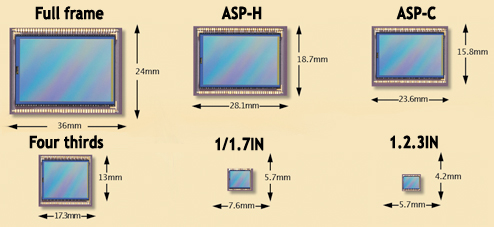Do you know about the cameras have different sensor sizes? No? let’s find out in this article.
Not all cameras will give you the same result it varies from different sensor sizes. For example, an entry level DSLR is a crop sensor camera which results will vary from a full frame DSLR- Even if they have exact same pixel count. If you want to get the highest images quality, you may need larger sensor cameras and extremely powerful specifications.
Why are the camera sensors important? A camera sensor can change the quality of an image as the larger the sensor – the better the quality of the image. Bigger image sensors have bigger pixels which mean lower noise at higher ISO, ability to hold more information, better low light performance.
As a photographer, it is important to know about the camera details especially if you are planning to buy a new one. The sensor of a camera is the must thing to study as it affects your image quality at a very different level.
Digital camera sensor types
Medium format
It is the type of camera sensor that is not in the knowledge of most of the photographers, especially to the beginners. Highest quality of an image is given from medium format. It has the largest image sensor that is available in the photographic applications. There are a variety of sensor sizes for medium-format cameras, and typical sizes range from around 43.8×32.9mm to 53.7×40.2mm. Due to their large camera format sizes, they are bulkier than full-frame DSLR cameras.
Pros
- Amazing picture quality
- Nothing will come close
Cons
- Very expensive
- Bulky
- Can’t be carried around.
Full frame
Full-frame cameras can be found both in DSLR and mirrorless cameras. This camera sensor type is considered the gold standard for the professional photographers who wants the highest quality images.
The dimensions of a 35mm sensor are typically 36×24mm.
Pros
- Good low light performance
- more light in the viewfinder
cons
- cost
- weight
- field of view
- lens availability
APS-H
The APS-H is slightly larger than the APS-C sensor format that many Canon DSLR cameras use today but smaller than a traditional full-frame sensor. Canon launched its first APS-H type of format in its canon 1D and it launched 4 more cameras after that under the 1D series with the same sensor type.
Canon APS-H Camera List
- Canon EOS 1D Mark IV
- Canon EOS 1D Mark III
- Canon EOS 1D Mark IIN
- Canon EOS 1D Mark II
- Canon EOS 1D
APS-C
It is the most versatile and most commonly used camera sensor type. It is available in DSLR and mirrorless cameras. It is also known as crop sensor format.
The typical APS-C sensor size is different across camera brands. Canon APS-C sensors are usually 22.3×14.9mm, while other brands like Nikon, Sony, Pentax, and more usually feature APS-C sensors with 23.6×15.6mm dimensions.
Four Thirds/Micro Four Thirds
Created by Olympus and Panasonic, the Four Thirds. Image sensor size is 17.3×13mm with a crop factor of 2.0 when compared to full-frame camera sensors.
Mirrorless cameras with the Micro Thirds Format System was released in 2008. It shares the Four Thirds System’s sensor size and specifications but uses a compact design with no space for the movable mirror, pentaprism, and other parts of the DSLR mechanisms not found in mirrorless cameras.
The Four Thirds System uses a 4:3 image aspect ratio, hence the name. The Micro Four Thirds System uses the same ratio but can also record 16:9, 3:2, and 1:1 formats.
1” Type (and below)
Any sensor that is about 1.5 to 1-inch in size or smaller can be found in non-interchangeable lens cameras (your typical point and shoot) and smartphone cameras.
These cameras can mostly be called as point and shoot cameras. They produce good results and can be used as their personal travel cameras. these cameras are easy to use and don’t have enough manual exposure options. They offer a particular amount of zoom and no viewfinder. They are usually cheap in cost. And cameras like the Panasonic Lumix DMC-FZ1000 and the Sony Cyber-Shot DSC-RX10 III use 1-inch sensors, allowing these cameras to produce good results—in terms of image and video quality. We can say your smartphone cameras sensor falls under this category.
We are from The Jigsaw, professionals with great experience of using various camera sensors according to the requirements.
